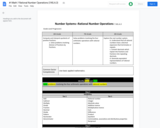
Solve problems involving the four arithmetic operations with rational numbers.
- Subject:
- Mathematics
- Material Type:
- Activity/Lab
- Author:
- Liberty Public Schools
- Date Added:
- 04/12/2021

Solve problems involving the four arithmetic operations with rational numbers.
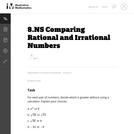
This task can be used to either build or assess initial understandings related to rational approximations of irrational numbers.
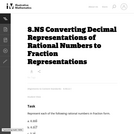
Standard 8.NS.1 requires students to "convert a decimal expansion which repeats eventually into a rational number." Despite this choice of wording, the numbers in this task are rational numbers regardless of choice of representation. For example, 0.333 and 1/3 are two different ways of representing the same number.
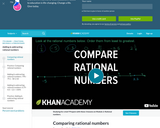
This lesson compares rational number and orders them from least to greatest using the number line. [Developmental Math playlist: Lesson 132 of 196]

Using the fundamentals of set theory, explore the mind-bending concept of the "infinity of infinities" -- and how it led mathematicians to conclude that math itself contains unanswerable questions.

This task requires students to determine whether a number is rational or irrational. The task assumes that students are able to express a given repeating decimal as a fraction.

Four full-year digital course, built from the ground up and fully-aligned to the Common Core State Standards, for 7th grade Mathematics. Created using research-based approaches to teaching and learning, the Open Access Common Core Course for Mathematics is designed with student-centered learning in mind, including activities for students to develop valuable 21st century skills and academic mindset.

Working With Rational Numbers
Type of Unit: Concept
Prior Knowledge
Students should be able to:
Compare and order positive and negative numbers and place them on a number line.
Understand the concepts of opposites absolute value.
Lesson Flow
The unit begins with students using a balloon model to informally explore adding and subtracting integers. With the model, adding or removing heat represents adding or subtracting positive integers, and adding or removing weight represents adding or subtracting negative integers.
Students then move from the balloon model to a number line model for adding and subtracting integers, eventually extending the addition and subtraction rules from integers to all rational numbers. Number lines and multiplication patterns are used to find products of rational numbers. The relationship between multiplication and division is used to understand how to divide rational numbers. Properties of addition are briefly reviewed, then used to prove rules for addition, subtraction, multiplication, and division.
This unit includes problems with real-world contexts, formative assessment lessons, and Gallery problems.

Lesson OverviewStudents learn the definition of rational number, and they write rational numbers as ratios of integers and as repeating or terminating decimals.Key ConceptsStudents have been working with rational numbers throughout this unit, but the term rational number is formally defined in this lesson. A rational number is a number that can be written in the form pq, where p and q are integers. All the integers, fractions, decimals, and percents students have worked with so far in their math classes are rational numbers. Following are some rational numbers written as ratios of integers:36=361−1.2=−12105%=5100 −12=−12Any rational number can also be written as a decimal that terminates or that repeats forever in a regular pattern. For example, 35 = 0.6 and 711 = 0.63636363… Repeating decimals are often written with a bar over the digits that repeat. For example, 0.63636363… can be written as 0.63¯.There are numbers that are irrational. These numbers include π and the square root of any whole number that is not a perfect square, such as 2. The decimal form of an irrational number does not terminate, and the digits do not follow a repeating pattern. Students will study irrational numbers in Grade 8.Goals and Learning ObjectivesUnderstand the definition of rational number.Write rational numbers as ratios of integers.Write rational numbers as terminating or repeating decimals.SWD: Students with disabilities may have difficulty working with decimals and fractions, especially moving between the two. If students demonstrate difficulty to the point of frustration, provide direct instruction on the basics for finding equivalent fractions and decimals.ELL: Target and model key language and vocabulary. Specifically, focus on the term rational, as well as terms such as terminate. As you’re discussing the key points, write the words on the board or on large sheets of paper and explain/demonstrate what the words mean. Since these are important points that students will be using throughout the module, write them on large poster board so that students can use them as a reference. Have students record new terms, definitions, and examples in their Notebook.
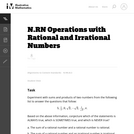
This task has students experiment with the operations of addition and multiplication, as they relate to the notions of rationality and irrationality.

The scope of this video lesson consists in studying the sets of Rational and Irrational numbers. It is best suited for an advanced math course: Algebra 2 or higher.
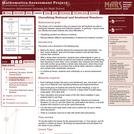
This lesson unit is intended to help teachers assess how well students are able to distinguish between rational and irrational numbers. In particular, it aims to help teacher identify and assist students who have difficulties in: classifying numbers as rational or irrational; and moving between different representations of rational and irrational numbers.

This lesson unit is intended to help teachers assess how well students reason about the properties of rational and irrational numbers. In particular, this unit aims to help teachers identify and assist students who have difficulties in: finding irrational and rational numbers to exemplify general statements; and reasoning with properties of rational and irrational numbers.

This task makes for a good follow-up task on rational irrational numbers after that the students have been acquainted with some of the more basic properties. In addition to eliciting several different types of reasoning, the task requires students to rewrite radical expressions in which the radicand is divisible by a perfect square (N-RN.2).